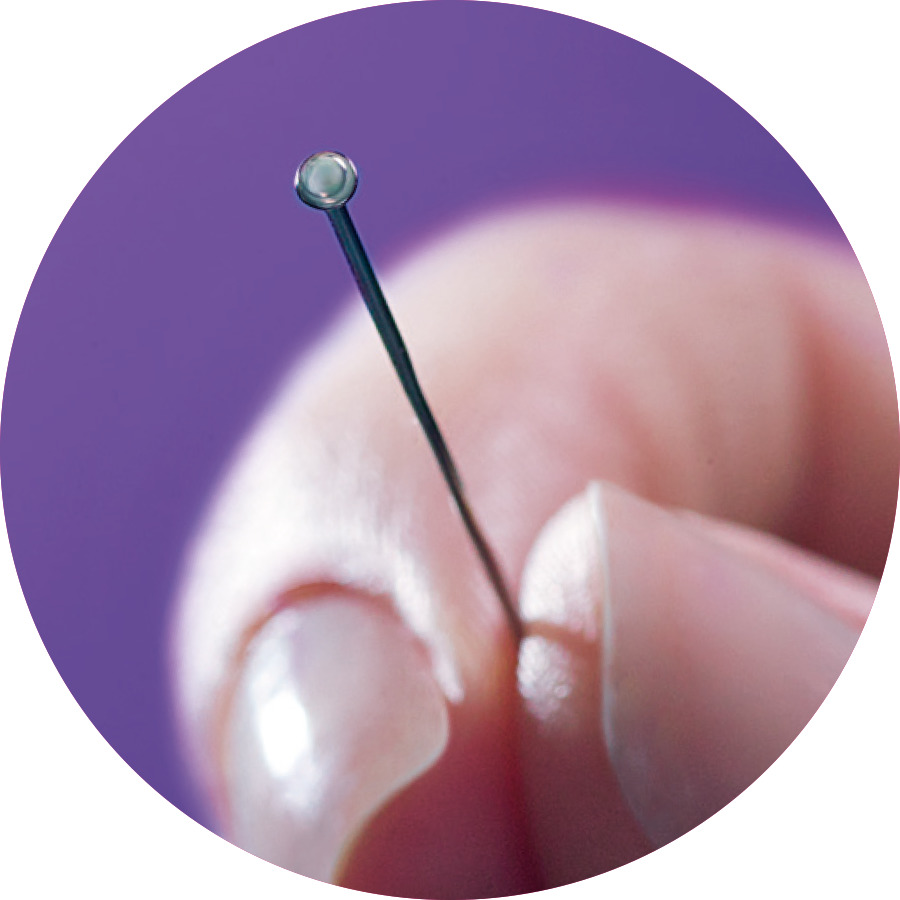How the scorpion inspired NASA
The National Aeronautics and Space Administration got inspired from the legs and movement of a scorpion to develop a multilegged robot. A scorpion walks freely on rocky and rough terrains. Most often, sites that NASA is interested to study are on rough terrains or even on the sides of a cliff. A car or any machine which has big wheels can pass through a rocky terrain but can't pass through small spots. If smaller wheels are used, the machine can get stuck in sand. The best solution is to design a machine with legs so that all legs will support each other. That's where the scorpion came in handy |
| Scorpion robot prototype manuevering down an incline |
Imagine a fabric material that adjusts to suit its wearer's temperature
Imagine if one part of your body is hot and sweaty then the dress you're wearing opens up a bit (just at the sweaty part) to cool down your body temperature. Won't it be cool? Well stop imagining because such fabric is real and its production was inspired by the opening and closing of the pine cone's flaps. The reason behind the opening and closing of the pine cone's flaps is change in humidity. When warm and dry, the flaps open up to release seeds. When damp or cold, the flaps close up. Now, this material was designed using the reverse mechanism so that when it's wet in the inside (because of sweat), it'll open up and close as the sweat reduces. Each flaps in the material is just 1/200 of a millimetre. The material also features a water proof layer so that rain from thee outside won't pass through. This cool fabric was inspired by nature.
Ultra-thin, high-speed motion detecting lenses
You may know that insects have compound eyes (i.e eyes filled with lenses that view different directions) but you may not know that an insect like a dragon like could have around 30,000 lenses in just one eye. That's about 60,000 lenses in both eyes. Each of these lenses combine to produce images like a wide mosaic view. Because of such compound eyes, the dragon fly are superb at detecting movements. Now, engineers have developed an artificial compound eye that fits 8,500 lenses into a space the size of a pinhead. This compound eye however, would be attached to image sensors like cameras. This will modify high speed motion detecting sensors.
 |
| 8,500 lenses fit into a space the size of a pinhead |
Autopilot systems and navigation of our aircrafts inspired from the Monarch butterfly
Monarch butterflies are able to migrate from Canada to Mexico yearly without losing their way. These butterflies have a brain with the size of the tip of a pen. How do they navigate with such a tiny brain? They do this with the aid of the sun. Since the sun rises in the east and sets in the west, they know that the sun travels from east to west. Traveling from Canada to Mexico is more like travelling from the north east to the south west so these butterflies rely on the sun for their Migration. Planes using a device the size of a debit card also mimics the butterflies. This device not only guides the plane from country to country, but also aids to land the plane. Engineers have learnt from nature how to produce such devices
 |
| Monarch butterfly |
Mimicking the wings of a seagull
Well, it's already certain that the wings of aircrafts were inspired by the wings of birds. This time around, engineers have taken this mimicry to new heights. How? When seagulls are maneuvering in the air, they flex their wings at the elbow and shoulder joints. This allows them to maneuver freely in the air. Engineers have made drones with movable wings so that they can easy dive between tall buildings by just maneuvering.
| Notice how the wings are flexed |
Learning from the beak of a squid
You may know that squids have no bones. You may also know that their skins are all soft and appear like jelly. What you don't know is that their beaks are among the hardest materials on Earth. The beaks are so hard that they can slice through fishes like a very sharp knife. How does such a hard material fit into a soft material? Observing the beak of the squid, scientists discovered that the tip is hard while the base is soft. The beak is made up of chitin, water, and protein which changes in density from position to position so gradually from soft to hard. This knowledge can be applied into various aspects. Engineers can use this knowledge to attach different materials together. One application is the making of prosthetic limbs that would match the elasticity of cartilage on one side and be stiff in the other side. This is one of what engineers have learnt from nature.
 |
| Notice the hardness of the beak of a squid |
Now that we know a few of what scientists and engineers have learnt from nature
Let us give the natural world and Biology their credits. Biology isn't just the study of life but also the application to the modification of our lives. Let us always study nature. Please share this article with friends
Read What about the Earth? Why save it?
Read What about the Earth? Why save it?
References:
- https://www.nasa.gov/centers/ames/research/exploringtheuniverse/scorpion_robot.html
- http://parentingchaos.com/why-do-pine-cones-open-and-close/
- https://news.nationalgeographic.com/news/2004/10/1013_041013_smart_clothing_2.html
- https://wol.jw.org/en/wol/s/r1/lp-e?q=the+eye&fc%5B%5D=brch&p=sen
- http://news.bbc.co.uk/2/hi/science/nature/4946452.stm
- https://www.csmonitor.com/Science/2016/0415/Scientists-crack-mystery-of-migrating-monarch-navigation
- https://www.telegraph.co.uk/news/2016/04/15/mystery-solved-how-monarch-butterflies-navigate-from-canada-to-m/
- https://wol.jw.org/en/wol/d/r1/lp-e/1102010232
- https://boingboing.net/2008/09/08/squid-beaks-and-mate.html
- https://wol.jw.org/en/wol/d/r1/lp-e/102009099





No comments:
Post a Comment